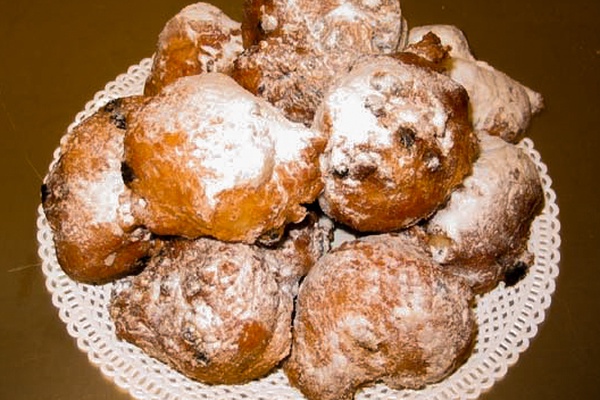An oliebol is a traditional Belgian and Dutch beignet. They are called oliebollen or smoutballen in the Netherlands, smoutebollen in Flanders and croustillons in Wallonia, Schmalzkugeln in Eastern Belgium German. In France, with croustillons they are also commonly called beignets rapides and croustillons hollandais . In out-of-Belgium German, they are called Ölkugel, Püpperchen and Pupperle, Silvesterfutschen in Northern Germany, and Gebackene Mäuse in Austrian German. In English they are more commonly known as Dutch doughnuts or dutchies. In Italy, they are called in many different ways and it depends on the Region: bombolini fritti, ficattole, bignoli, frittoli, sgabei, bignet, panzanelle, coccoli, zonzelle, donzelle and so on. In the region of Istria, which is shared by the countries of Italy, Croatia and Slovenia, a variation of this dish is called fritole, fritule and blinci. In Serbia they are called krofne. In Portugal they are called sonhos . In Indonesia, they are known locally as roti goreng. Also, in Ghana, West Africa, they are known locally as bofrot or bofflot, and in the south of Benin, in the Fon language as yovodocon, i.e. "white man's dumplings". In Nigeria, they are known as 'puff puff'. In Iceland they're known as Ástarpungar .
Oliebol
Dutch
traditional Dutch and Belgian food

Characteristic of:
Belgian cuisine
Also known as:
English:
Olie BollenOlie BolOliebollensmoutballensmoutebollencroustillonsSchmalzkugelnÖlkugelPüpperchenGebackene MäuseDutch doughnutsdutchiesÁstarpungar
Wikidata ID:
Q152536
Wikipedia title:
Oliebol
References:
Article content licensed under CC-BY-SA; original content from Wikimedia Foundation; image data under CC-BY-SA from Wikimedia Foundation
ID: 13069